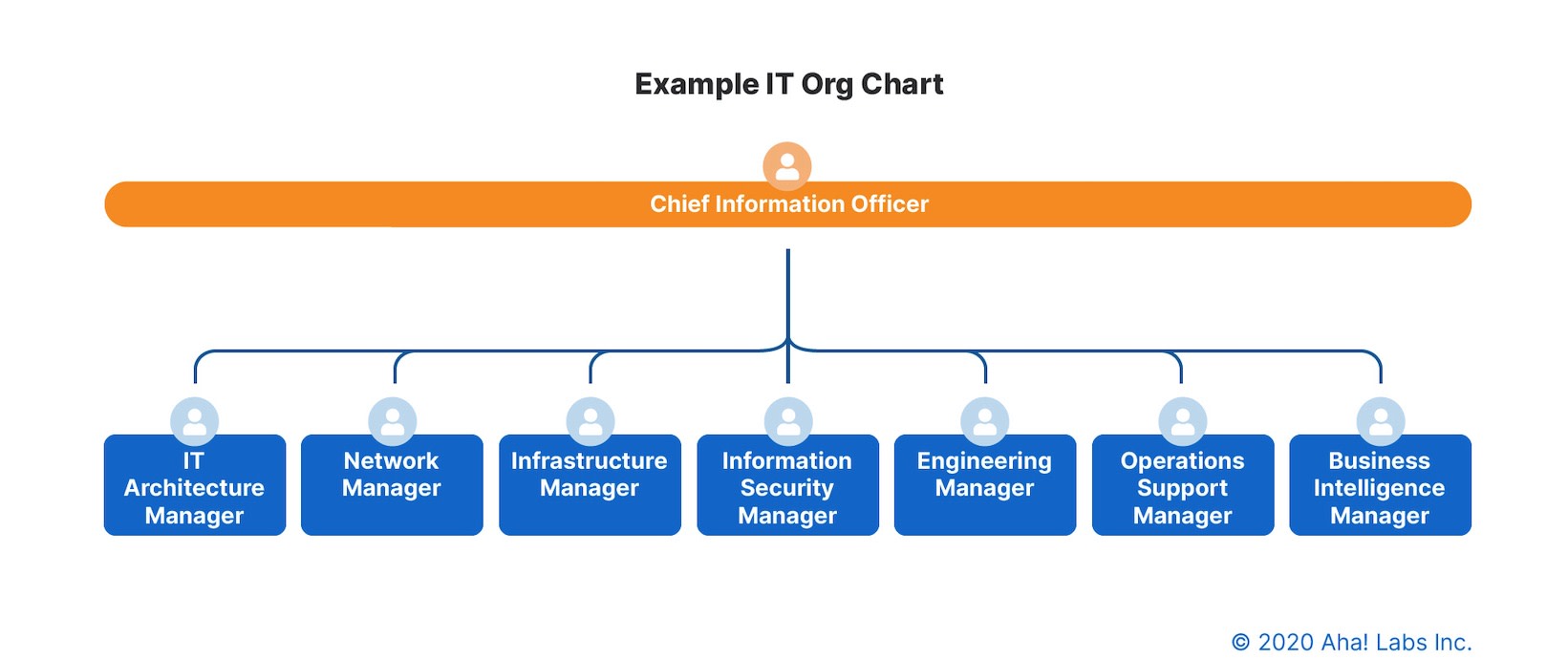Who makes up an IT team?
A lot of people outside of IT do not really understand what your team does. And that should not be the case — because IT is responsible for supporting the entire business. The technology and resources that you provide bring real value to the organization and make it easier for everyone to do their jobs well.
Most IT teams are organized around functions or projects. In smaller organizations, IT practitioners may be generalists with a wide range of technical knowledge. In larger organizations, teams tend to be more specialized.
For example, functional teams are typically divided into the following areas: architecture, networking, infrastructure, security, software development, support, and business intelligence. Each of these teams might have their own IT manager or a shared manager.

Feel free to jump ahead to learn more about:
IT architecture
IT architecture teams are responsible for optimizing how services, solutions, and infrastructure are built — by selecting technology and methodologies that will help the business meet its strategic objectives. They look at the IT landscape as a whole to increase adaptability and reduce risk. They play a key role in helping the organization replace legacy systems and prepare for an enterprise transformation.
Under the direction of a chief enterprise architect or IT manager, other roles typically include enterprise architects, solution architects, and network engineers.
Networking
As a stand-alone group or smaller group within architecture, network administration teams monitor network technology, including routers, firewalls, and servers. Their work ensures an organization’s local area network (LAN) and wide-area network (WAN) operates properly. The group also works closely with the security team to minimize network security threats.
A networking team is comprised of network architects, analysts, engineers, and hardware experts. A common subset is the computer systems administration team, which supports end users by configuring and maintaining computers, operating systems, and other applications that are connected to the network.
Infrastructure
Infrastructure teams maintain the hardware, software, and data needed to operate and manage IT infrastructure, whether on-premise or in the cloud.
Infrastructure teams are typically led by a database administrator (DBA). Other members may include database analysts and data warehouse specialists. Some infrastructure teams also include hardware experts who install and maintain servers, computers, switches, routers, and other physical equipment.
Information security
Information security teams are responsible for protecting an organization's sensitive data — by detecting and responding to incidents as well as planning preventative measures, such as encryption. Security teams manage network security (LAN and WAN), end-point security (laptops, cell phones, tablets), and internet security (documents or other files downloaded from the internet).
Depending on the size of the organization, a security team might consist of a chief information security officer (CISO), application security administrators, cloud security architects, cybersecurity specialists, and data security specialists.
Engineering and quality assurance (QA)
Engineers and software developers build applications used by employees and/or external customers. Typically, developers are responsible for the software lifecycle — requirements, architecture, programming, testing, maintenance, change management, continuous integration, and release management — with support from the broader IT function and quality assurance (QA) engineers.
QA engineers prepare and run tests and work closely with architecture teams. They are responsible for the overall quality of the software or product.
Development and QA teams consist of full-stack, back-end, and front-end developers, as well as software architects, engineers, and testers. In agile software development, product managers, project managers, or scrum managers also play an integral role in development.
IT support
IT support refers to the team that provides technical assistance across the organization, such as installing new tools or troubleshooting software and hardware issues. Some companies have IT support teams that help identify and fix customer problems related to the company's product.
IT support teams are often structured in tiers based on the level of their technical expertise and training. Tier one technical support specialists are typically the first level of support for basic technical issues, followed by tier two and tier three support specialists.
Business intelligence
Business analytics (BA) and business intelligence (BI) specialists access, filter, and analyze data to help the business make better decisions. In a larger organization, these specialists may be on a separate team. In smaller organizations, they are embedded in the larger team.
Connecting the team to broader strategy
No matter how your IT team is structured, it is critical that each group's work is aligned with broader IT goals and the company strategy. Increasingly, IT is responsible for innovating and improving the overall customer experience.
IT teams need great technology, too — sign up for a free 30-day trial of Aha! Roadmaps to visualize your strategy, manage ideas, build an IT roadmap, and measure results all in one place.